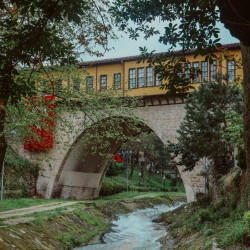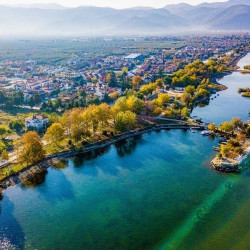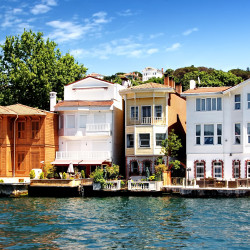Visiting Cumalıkızık is like traveling in time. It takes you a few centuries beyond with its wooden houses with bay windows, stalls where manufacturers display their products in the village square, ethnography museum, historical baths, coffeehouses, and mosques with wooden ceilings. It is unbelievable that a village that was destroyed 15 times and rebuilt 15 times as a result of natural disasters and wars can preserve its own texture. A UNESCO world heritage site, the village attracts many tourists today. It is possible to visit the whole village in a few hours.
How to get to Cumalıkızık?
Cumalıkızık is a neighborhood of Bursa. You can reach the village, which is 11 km from Bursa city center, in approximately 20 minutes by buses departing from Bursa.
From Istanbul to Bursa:
Bursa is located in the south of Istanbul and it takes about 2 hours to reach there. The two most ideal routes for those who have a private vehicle are; to reach Yalova by ferry or Osmangazi Bridge and then to reach by road via Kocaeli. If you do not have your own vehicle, it is also possible to reach the center of Istanbul directly by taking the sea buses departing from ports such as Kadıköy, Eminönü, Yenikapı, and Kabataş. You can check the BUDO and İDO websites to find out the timetable of these sea buses. You can also choose intercity buses.
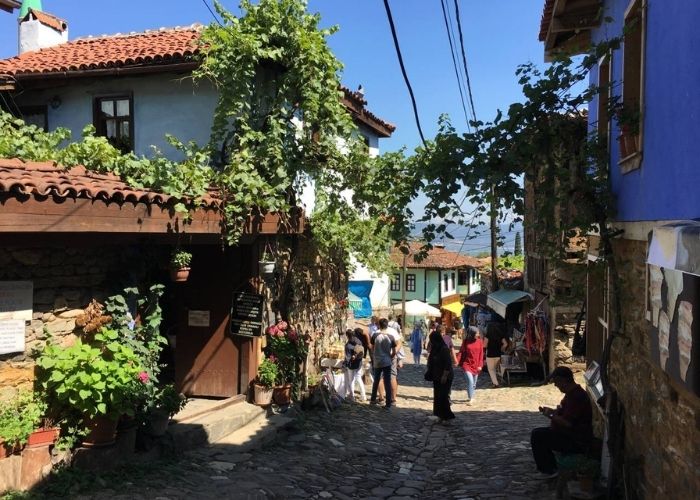
History of Cumalıkızık
Cumalıkızık is a settlement founded by the Oghuz Turks - Kızıks in the 1300s. However, because the village was destroyed and rebuilt so much, the historical buildings you see today are at most 150 years old. The Oghuz Turks are a community that escaped the attacks of the Mongols at the beginning of the 13th century and settled in a wide geography from Central Asia to Anatolia, Iran, and Syria. It is thought that they settled in Bursa around 1306. Cumalıkızık, which hosts examples of early Ottoman civil architecture, is one of the 7 Kızık villages established around Uludağ during this period. Five of these villages, Cumalıkızık, Derekızık, Hamamlıkızık, Fidyekızık, and Değirmenlikızık, have survived to the present day. Cumalıkızık is the one that has been preserved closest to its original texture. It is thought that the commercial relations between the inns in the center of Bursa and the surrounding villages like this place played an important role in the birth of the Ottoman Empire.
Küpeli Ev (House with Earrings)
The name of the Küpeli Ev, which is about 350 years old, comes from the fuchsia flower that is everywhere in the house. You can see the items used by the people who used to live in this village and the house layout at that time in this house.
Cumalıkızık Mosque
When you come to Cumalıkızık, you see the first Cumalıkızık Mosque right in the village square. It is said to be a 300-year-old mosque built under the influence of Seljuk architecture.
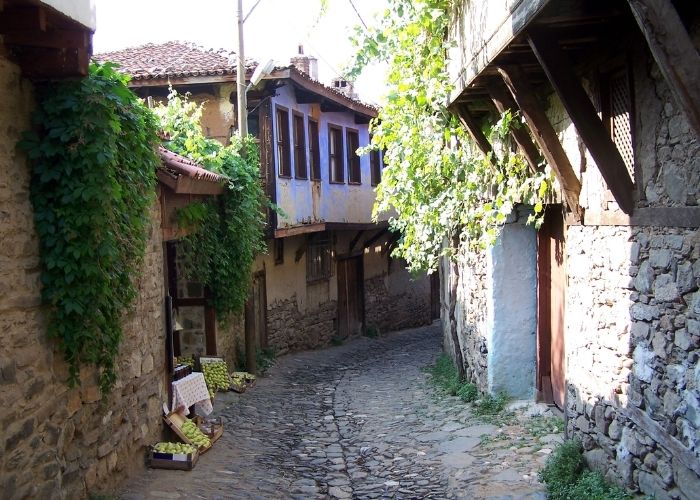
Cumalıkızık Turkish Bath
It is not known when Cumalıkızık Bath was built, but it is a very old one. If you want to see how the baths in the Ottoman period were, we say stop by here.
Sycamore Trees
Located at the entrance of Cumalıkızık, 2 huge plane trees welcome visitors to the square. It is thought that the plane trees have been in the village for more than 400 years. The trunk circumference of the younger one is exactly 4 meters. Natural causes such as wind and snow caused some of its branches to curl. The trunk circumference of the other plane tree is 6 meters. These trees, which carry the traces of centuries, are also worth seeing.
Marketplace
When you first enter Cumalıkızık, you will see many stalls in the square where the bus stop is, this is the marketplace of Cumalıkızık. Locals of the village sell jams, pancakes, and noodles that they make with their own hands; In season, there are hormone-free cherries, strawberries, raspberries, and blackberries freshly picked from the orchards at the back of the village and around it. You can also find many panacea teas and herbs. Chestnut is another specialty of the village. Don't pass without taking a look at these stalls.

Discover more outdoor experiences with Istanbul.com
If you're looking to make the most of your trip to Istanbul, and seeking an unforgettable outdoor experience, the Sapanca Lake and Maşukiye Daily Tour is a must-see. Immerse yourself in the stunning natural beauty of the region with this breathtaking journey through scenic landscapes. And if you're a thrill-seeker, don't miss Xtrem Adventures Istanbul - a high ropes park with zip-lining and other adrenaline-pumping activities. By purchasing your attractions through Istanbul Tourist Pass®, you'll not only save time and money but also gain exclusive access to additional discounts and benefits. So don't wait - book your adventure today and make unforgettable memories in Istanbul!
Frequently Asked Question
What is Bursa Cumalıkızık famous for?
The most important places to visit in Cumalıkızık are Cumalıkızık houses, monumental plane trees, Cumalıkızık Village Museum, Cumalıkızık Mosque, Cumalıkızık Bath and Saitabat Waterfall. The village is famous for its chestnuts, blackberries and raspberries. Since it is a place with plenty of tourists, you can see stalls with homemade products and souvenirs in front of most houses in the village.
Is Cumalıkızık in Bursa?
Cumalıkızık is a cute Ottoman village in the Yıldırım district of Bursa.
Bursa to Cumalıkızık is 12 kilometers east and an average of 20 minutes,
It is 168 kilometers from Istanbul to Cumalıkızık and it is approximately 2 hours and 20 minutes away.
What's Cumalıkızık like?
Cumalıkızık, which is one of the regions where the Ottomans first settled in Bursa, carries the Ottoman period housing texture to the present day with a total of 270 houses, 180 of which are still in use and some of them are protected and restored. Visiting Cumalıkızık is like traveling in time. It takes you a few centuries beyond with its wooden houses with bay windows, stalls where manufacturers display their products in the village square, ethnography museum, historical bath, coffeehouses and mosques with wooden ceilings. A UNESCO world heritage site, the village attracts many tourists today. It is possible to visit the whole village in a few hours.
 English
English  Indonesian
Indonesian  Urdu
Urdu  Taiwanese
Taiwanese  Russian
Russian  Romanian
Romanian  Portuguese
Portuguese  Persian
Persian  Macedonian
Macedonian  Korean
Korean  Japanese
Japanese  Italian
Italian  Indian
Indian  Hungarian
Hungarian  Greek
Greek  German
German  Croatian
Croatian  Chinese
Chinese  Bulgarian
Bulgarian  Arabic
Arabic  French
French  Spanish
Spanish 



